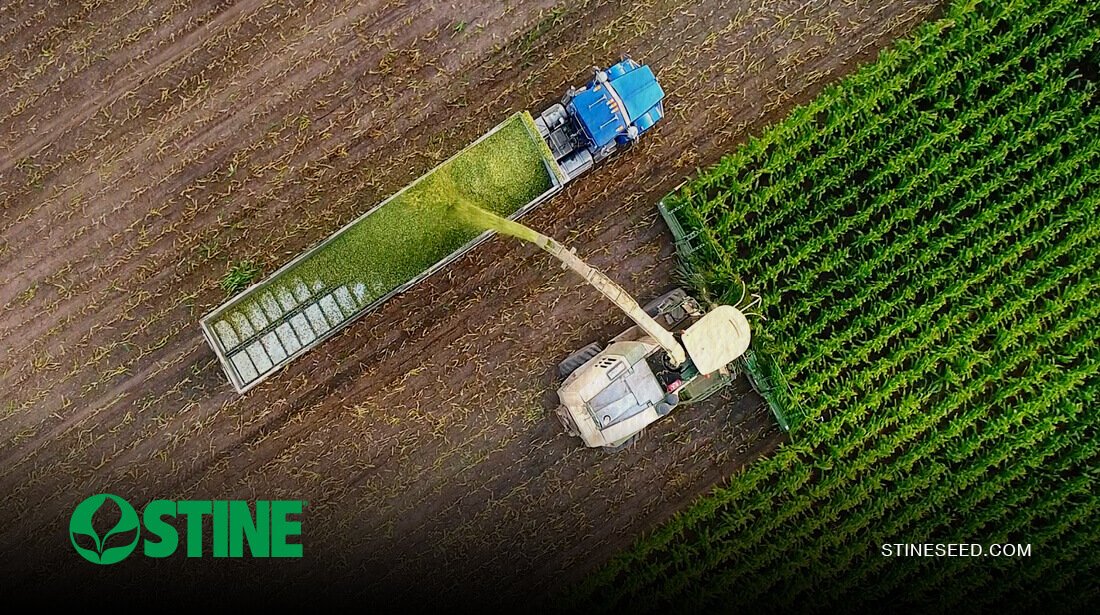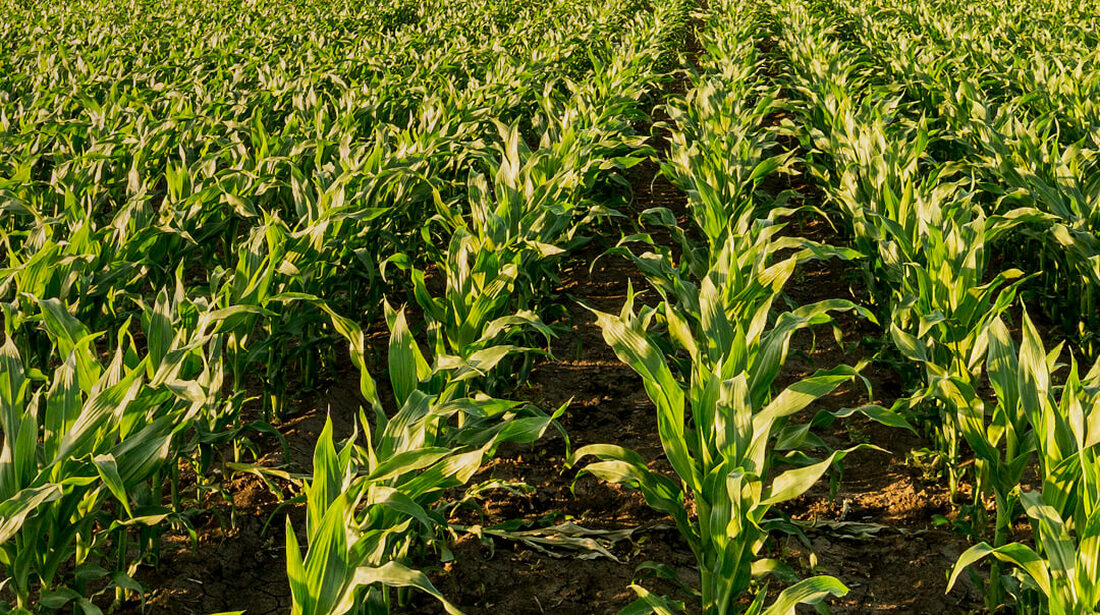For many growers, the success of a corn crop comes down to grain production. However, for livestock producers and dairy farmers, tonnage and milk per ton rank among the top considerations regarding value. Fortunately, Stine® corn yields big results for silage acres.

“Through our research over the years, we’ve found several Stine corn hybrids that not only produce great yield but also excellent silage value,” says Derek Dreier, regional sales agronomist for Stine Region 24 (Wisconsin). “We have multiple corn options available in 2025 to serve that dual purpose for dairy and livestock operators.”
What’s in a silage score?
We use Wisconsin-based Dairyland Laboratories, Inc. to test the silage value of our hybrids. Some key elements they look for are starch, fiber content and fiber digestibility, readily available starch, sugars, and crude protein, to name a few. These components tell us how well the cow can digest the grain and stalks, convert the feed to energy, and — in cases for dairy production — produce milk.
“When you get a test back from the lab, there are many different scores to look at, including total digestible nutrients (TDNs) and tons per acre,” says Dreier. “I always tell growers that the most critical for dairy production is milk per ton. That’s essentially the summary of everything, all the results in one.”
Another important factor for silage is lignin content.
“Lignin is the stringiness factor of the silage — a characteristic you don’t want,” says Tom Larson, Stine director of agronomy. “It’s essentially an indigestible fiber in the plant, so you want your silage to have a lower lignin score, around 2–4%.”
Mycotoxins should also be considered, as they are toxic to animals and can lead to livestock death. Always pay close attention to this score, and any other potential toxins listed.
The University of Wisconsin’s Corn Agronomy department has an in-depth look at silage composition numbers and rate recommendations, which is a great resource.

Understanding feeding versus dairy silage
Stine corn products for silage are used in feeding and dairy production.
“The primary difference between feeder and dairy silage is how the cow is going to use it,” says Larson. “Dairy silage needs to be higher in starch content to produce more energy for the cattle to make high-quality milk. Feeder silage is often higher in fiber to aid in the digestive process for growing cattle.”
For example, Stine 9817-30 brand corn is an excellent option for dairy production. It produces a nice starchy kernel that’s easier to digest and results in great milk per ton.
“Stine 9817-30 features a white cob, with a flowery kernel type that produces more starch and is more easily digestible than other hybrids,” says Dreier. “We have a lot of dairy farmers in Wisconsin seeing awesome performance with this corn line, as well as several other options in our lineup.”
Stine 9214-20 and 9215-20 brand lines are optimal for feeder silage, as they produce taller plants with excellent agronomics, which equate to good TDNs, high fiber and tonnage value. That said, while taller plants are widely known as excellent options for silage value, shorter corn hybrids planted in higher populations should not be overlooked.
The myth about short corn for silage
There is some disagreement in the industry about whether short corn is viable for silage production. We’d like the set the record straight.
Fact:
Short corn, when placed in narrow rows and increased populations, produces more tonnage than tall corn.
How do we know? We worked with the University of Wisconsin on a third-party trial that looked at tall, medium and shorter-stature Stine corn, as well as an industry competitor. In 30-inch settings, the tallest two products performed better from a tonnage standpoint. However, when we moved to narrow rows and stepped up the population, the short corn outperformed everything.
“You don’t need a 12- to 14-foot plant to have good silage,” says Dreier. “With short corn, you have less stalk, but you’re still maintaining a good ear size, which equates to better starch. We like to see 35% starch. It’s a lot easier to get to that number when you’re not using something tall.”
A higher population also equates to more plants per acre, which means more tonnage per acre. Fortunately, Stine has a many high-yielding short corn options suitable for silage for the 2025 planting season, including an all-new line of high-oil hybrids. Our high-oil hybrids are derived from our high-yielding MX Series Corn families blended in-bag with a unique pollinator to provide increased oil percentage, resulting in better silage.
“All our short corn options have strong roots and stalks that are built to withstand being planted into higher populations, as well as ear sizes consistent with the rest of products,” says Larson. “So, you’re getting more grain and more stalks per acre in higher populations, making short corn an excellent option for silage.”
To learn more about Stine corn, connect with your local Stine sales rep. We have approximately 17 corn hybrids with a proven track record for silage, ranging from an 85–87-day to a 115–117-day maturity. You can also view our 2025 Stine Seed Catalog online to find the best options for your operation.
Related Articles
-

Stine® to offer Syngenta’s Victrato® soybean seed treatment in 2026
December 2025 in Agronomy
-

Use Stine’s XP® seed treatments to prevent early injury to your crops
December 2025 in Agronomy
-

Understanding Stine’s enhanced oil profile soybeans
December 2025 in Agronomy
-

Soil sampling sets the stage for spring
November 2025 in Agronomy



